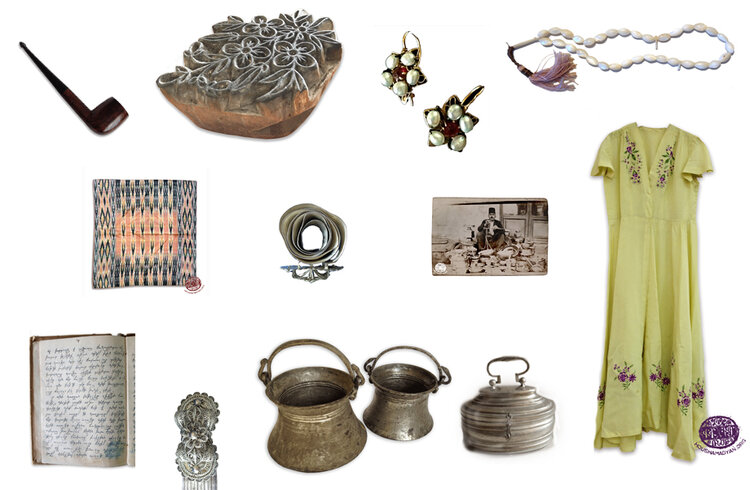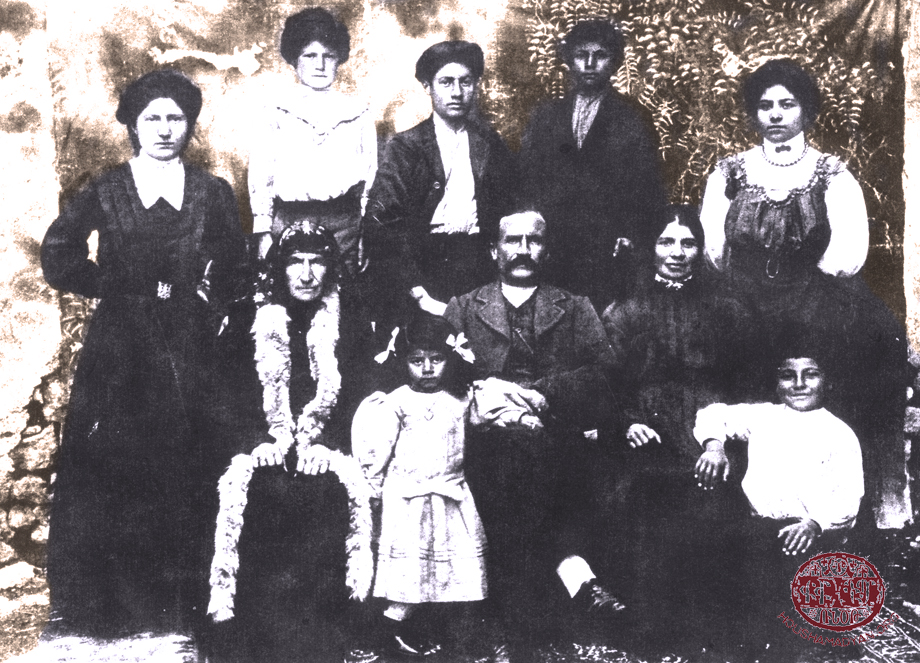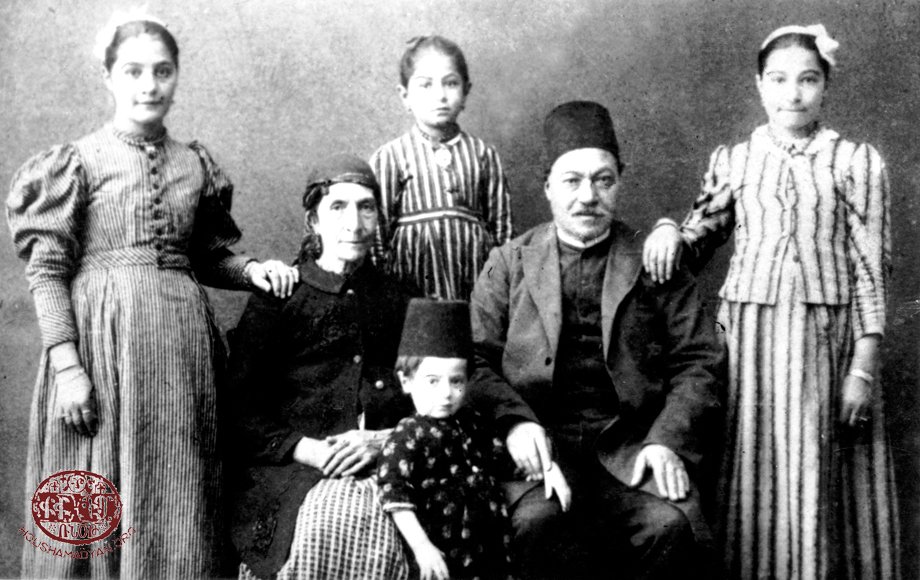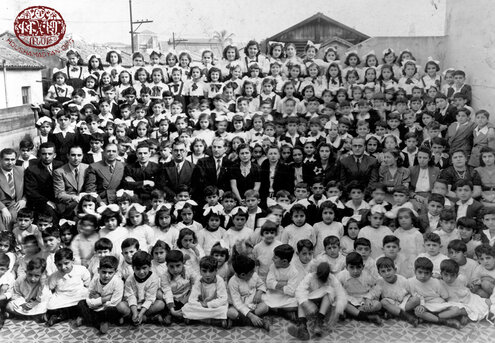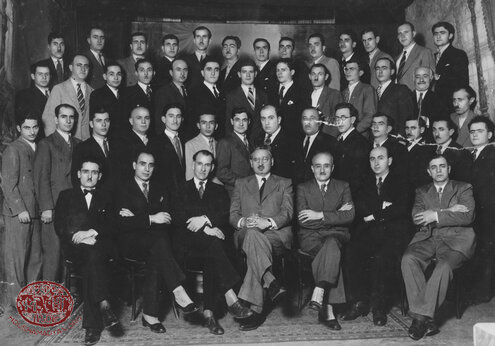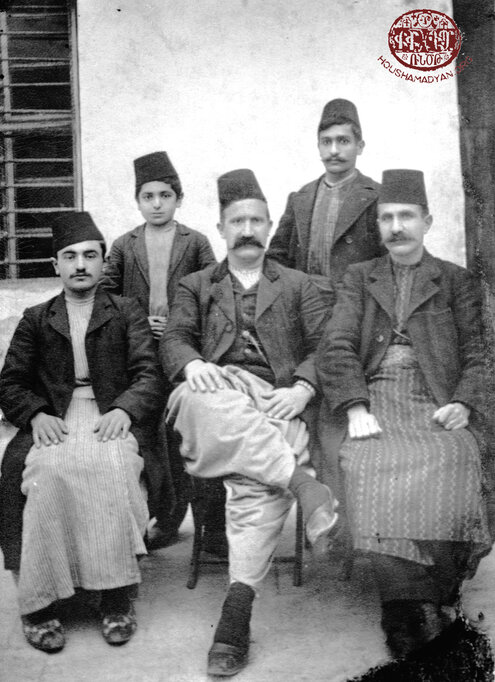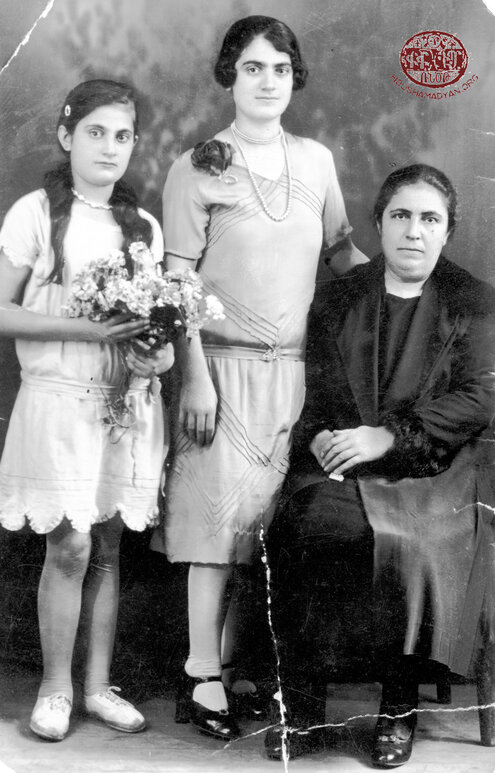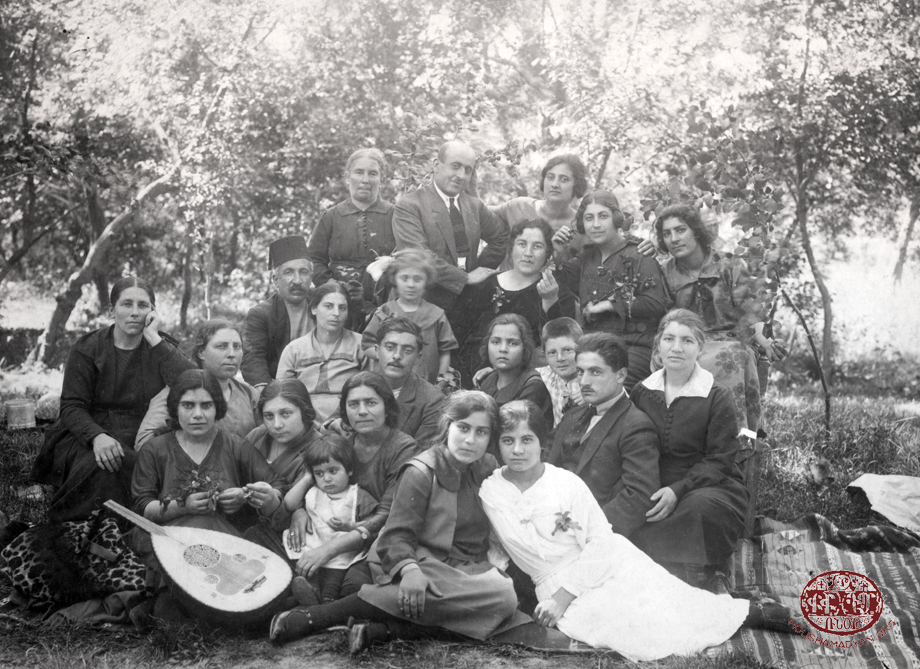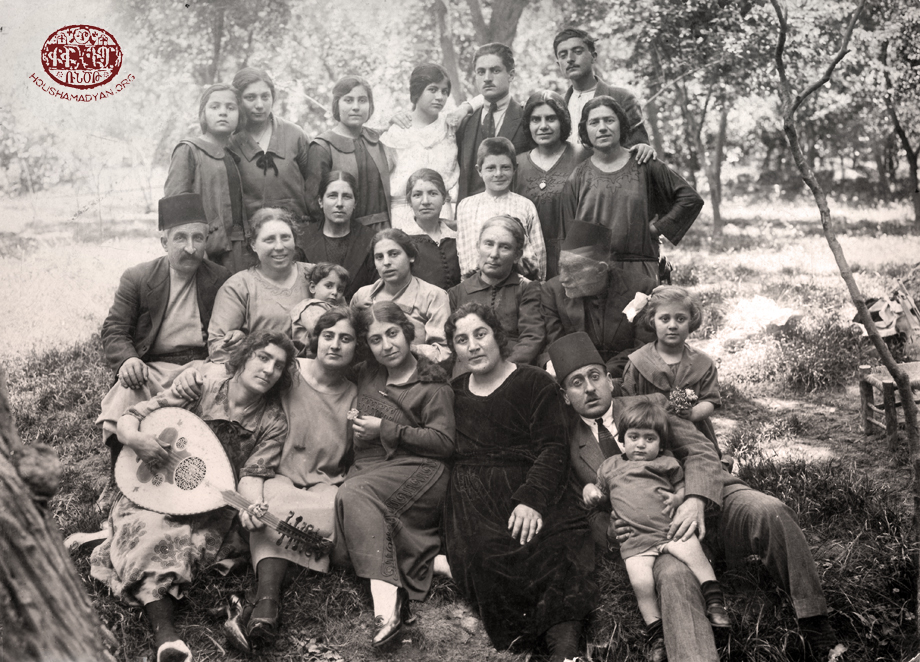Jorge Zaven Kurkdjian collection - São Paulo, Brazil
The collection of photographs we have received from Jorge Zaven Kurkdjian contains material from a diverse range of geographic locations. Kurkdjian’s paternal ancestors, Roupen Kurkdjian and his extended family, hailed from Kharpert/Harput, and consequently, the collection contains several photographs of Harput. As for his maternal ancestors, the extended family of Trvanda Dischekenian, they hailed from Marash. After being deported from their lands, evidently these two families made their way to Lebanon, and the collection contains several photographs from this country. Notably, two of the photographs depict the refugees from Harput during a nature hike, giving us a glimpse into the attempts of these families to rebuild their lives and re-establish a sense of normalcy after the Genocide. This process continued later in Brazil, where the Kurkdjian and Discheckenian families eventually settled. Roupen Kurkdjian and his family were well-known for being active in the communal life of Armenians in São Paulo.
Kharpert, 1912. The Kurkdjian family. Seated, left to right - Ruth (Jorge's great grandmother, who passed away in the United States at the age of 103), Kevork (Jorge's grandfather, born in 1862, and killed in 1915), and Takouhi (Kevork's wife, Jorge's grandmother, 1871 Harput - 1954 São Paulo). In the first row, from left to right, the two children are: Arpine Kurkdjian (born in 1909, she later married to Yervant Keshishian, and died in São Paulo in 1979), and Hovsep Kurkdjian (1904-1970, United States). Standing, from left to right - Elmas Kurkdjian (born in 1892, she later married Charles Deranian, and died in the United States in 1993), Kourken Kurkdjian (1900-1917, Kharpert), Souren Kurkdjian (1895-1912, Kharpert), Rupen Kurkdjian (Jorge's father, 1902-1984, São Paulo), Mariam Kurkdjian (born in 1889, she later married Mossessian, and died in Lebanon in 1986). Benyamin Kurkdjian is missing from the picture, because he was born in the same year the picture was taken (1912). He died in São Paulo in 2011.
The Kurkdjian Family, Kharpert, in 1902. Seated, from the left: Ruth and her husband (name unknown). Standing between them, wearing the fez, is their grandson Kourken (the uncle of Jorge Zaven Kurkdjian). Standing, on the right, is Mariam Kurkdjian (Harput, 1889 – Beirut, 1986). The two other girls in the photograph have not been identified.
1) The Haygazian Armenian School in São Paulo, 1945.
2) Group photograph of members of the Armenian Revolutionary Federation (ARF) in São Paulo. The photograph was taken on the occasion of the 1936 visit of Simon Vratsian, a leader of the ARF and one of the prime ministers of the first independent Armenian Republic, to the city. The following individuals have been identified – seated, second from the left: Manug Sahagian; fourth from the left: Simon Vratsian. Second row, standing, sixth from the left: Karekin Tufenkdjian; seventh from the left: Roupen Kurkdjian. Third row, standing, second from the left: Hovhanness Dischekenian (Jorge’s maternal uncle). Last row, standing, eleventh from the left: Boghos Chalian (Jorge’s mother’s cousin); twelfth from the left: Toros Chalian (another cousin of Jorge’s mother’s).
1) Lebanon, in the early 1920s. Taken during a nature hike organized for Harput/Kharpert Armenians.
2) Lebanon, in the early 1920s. Taken during a nature hike organized for Harput/Kharpert Armenians. The following individuals have been identified – standing, back row, fourth from the left: Arpine Kurkdjian (later Keshishian); fifth from the left: Roupen Kurkdjian (Jorge’s father). The boy standing in front of Roupen is Benyamin Kurkdjian (Jorge's uncle), and the woman sitting to the left of Benyamin is Takouhi Kurkdjian.
